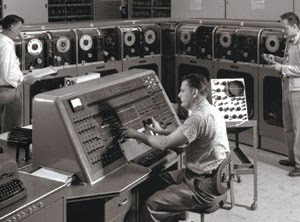
Abacus
The earliest calculating device was known
as Abacus. Its exact origin is unknown. It is
invented 2000 years ago. Its has 2 section:
Heaven and Earth
which are separated by beam. The heaven is
also called the upper deck, and the earth is also
called the lower deck. The Abacus was used to
perform addition and subtraction. It is still used
today in china and some other countries.


